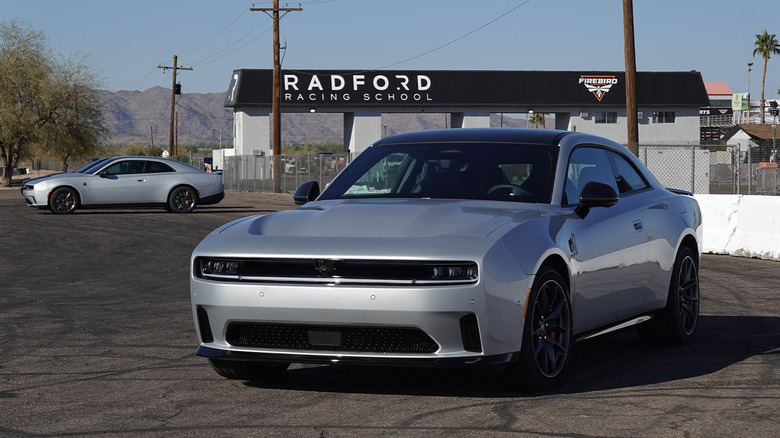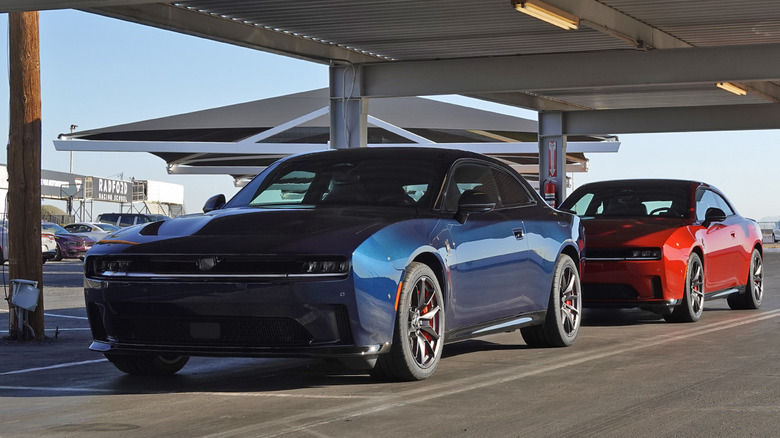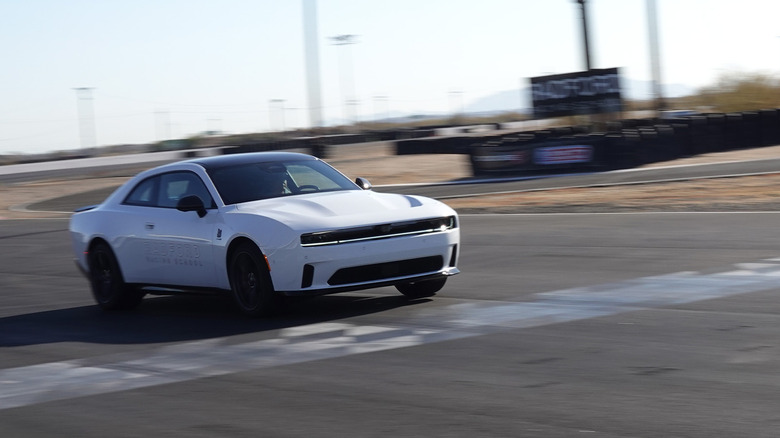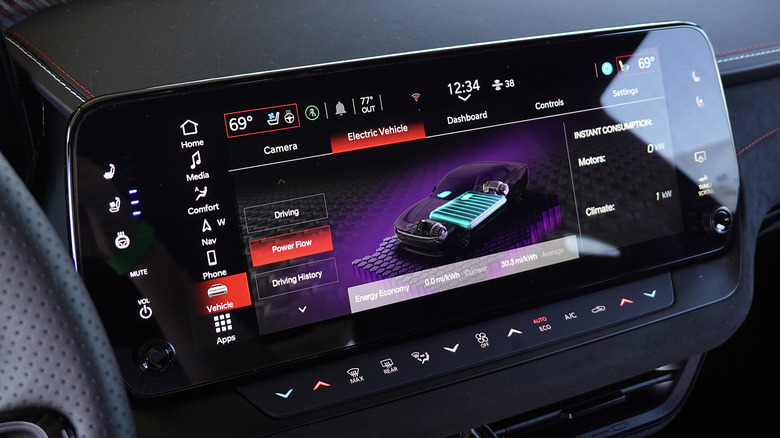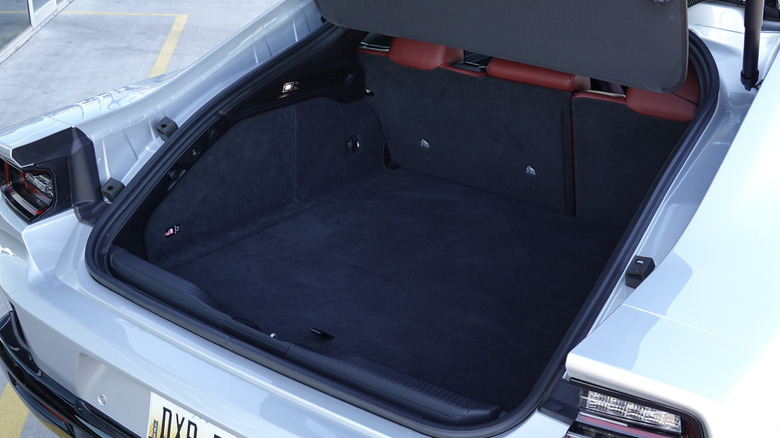2025 Dodge Charger Daytona First Drive: An Electric Muscle Car, For Better And For Worse
Everyone who harbored doubts about the newly-electric Dodge Charger Daytona probably did so for the wrong reasons. We know Dodge well, after all, and the company's steadfast commitment to Hellcats and Redeyes and gargantuan screaming superchargers amid this increasingly sterilized era of automotive design and development. Big and heavy? Yes, but the Chargers and Challengers (and Durangos!) all hark back to a prior period when fuel economy figures counted far less than the roar of exhaust and the squeal of tires.
More importantly for the electric Charger, known officially as the Charger Daytona, other EVs and hybrids from Stellantis left a lot on the table over the past few years. Even more heavy, with less range and power than the competition, these Frankensteins typically dredged up parts from Fiat, Chrysler, and who knows, maybe even Citroen. Not ideal, to say the least.
My own conversion therapy for appreciating modern Dodges came at Radford Racing School, where Hellcats reveal every little flaw in driving technique quite quickly. So on one hand, the fact that Dodge held a recent media launch program for the Charger Daytona EV at Radford made sense. Track time, road time, drag strip launches, and donuts on the skid pad—yes please, sign me up.
Specs and stats clash with real-world performance
The Charger Daytona's top Scat Pack trim level can put out a more than respectable 670 horsepower. On paper, that figure should sound solid given the punchy instantaneously available torque of electric motors. But the "on the other hand" emerged quite quickly just seconds into my first lap out in a Scat Pack, because this coupe weighs over 6,000 pounds with me in the driver's seat, rendering those 670 ponies somewhat less potent.
The lower-spec R/T package peaks at 496 horsepower, and lacks the wider tires, upgraded brakes, and fancy suspension of the Scat Pack. Yet despite the lower output, the R/T's curb weight remains identical because the two variants actually use the exact same motors, just tuned to different output levels. Why 496 and 670 hp, you ask? Well reaching those peak figures requires pushing the Power Shot button, which boosts output by an additional 40 hp for 10 seconds. So the R/T really does about 456 horsepower the rest of the time—or 30 less than a current car equipped with the 392ci Hemi V8. And yep, you guessed it, the Challenger Hellcat runs at 717 hp.
Futuristic muscle car lines
Clearly, Dodge wanted to keep the vaunted internal-combustion beasts in their rightful positional superiority. And yet the new Charger Daytona's styling goes a step further, with an almost GTO-ish front end with haunches just as muscular as muscle car aficionados might hope for. The widebody even runs two full inches wider than the current gas cars, and in truth, I actually kinda dig the new design. Call the muscles a cyborg's muscles, though, because of the crisp lines and metallic definition.
Dodge kicked off the press day with a hilarious intro video featuring plenty of burnouts and donuts, as a spokesman explained how the Charger Daytona will save the planet... From the boring tide of commuter car appliances, that is, not climate change.
Contextual requirements for comprehending the Charger Daytona
Only the Dodge reps on hand countered that video with some pretty serious hedging. "Please keep an open mind to all of this, and we think you're going to love it," said one. "This is a muscle car first," said many. You learn to take the schmaltz with a grain of salt, since we're all in our own little worlds and so often lack the ability to step back and truly take in the big picture.
The big problem for my perspective, though: I drove the spectacular new Lucid Gravity the day previous. In many ways, Lucid keeps getting better. That 6,000-pound SUV's downright wizardry left me astounded, taking the use case for EVs as both luxurious cruisers and hardcore canyon chargers (pun intended) to a new level (just don't ask whether it's a super-SUV or duper-minivan.)
Straight onto the track
After the presentation wrapped, I headed straight out to the track. Feeling some serious secondhand embarrassment for my colleagues who wanted to go on a road drive first, I got two stints in before anyone else even put a helmet on. But the most of my embarrassment came when the Fratzonic exhaust first fired up. Or, whatever, switches on. This speaker system with a resonator box accomplishes exactly what Dodge wanted. It's loud, brash, a bit futuristic, and does provide some physical vibration in addition to the noises.
I asked how much the Fratzonic system adds to that curb weight, but nobody knew the answer. Look at me, just an automotive journalist stumping engineers—and I'm truly surprised nobody else asked. Turns out that all things included, the Charger Daytona weighs 5,838 pounds. Hence the gargantuan 305- and 325-millimeter tires, front and rear, on the Scat Pack I drove around Radford's smallest handling circuit configuration.
Smoke but not from the tires
As is typical for a press launch, a Radford pro started me out in lead-follow format. I knew the circuit well but definitely needed some time to acclimate to this new car. And the smallest configuration started to make a lot of sense quite quickly, when I pulled into the pits after just three mid-pace laps with the brakes already smoking and stinking up the joint. That's not too surprising, given the sheer mass and Radford's tight, technical corners. In a certain way, even, it seemed classic Dodge—the opposite of the typically anesthetized EV experience.
But I already felt confused, thinking maybe I had the car in the wrong setting. The 670 horsepower seemed far less, as if the EV jerk kicked in and then petered out immediately. I consciously tried not to compare the Charger Daytona to the stellar Hyundai Ioniq 5 N, which similarly makes ridiculous fake internal-combustion noises but provides an entirely different track experience. Instead, I just put pedal to the metal and went back out for more laps.
Out for a cruise on public roads
After a couple more stints, other journos deserved a turn so I sauntered over to borrow an R/T for the road drive portion of the day. On the first right turn and hard pull away from Radford, my confusion doubled. The R/T seemed significantly quicker than the Scat Pack, despite the 200-hp deficit. The throttle response worked in a much more enjoyable fashion, too, with some punch at first but then a building sensation as speeds ramped up. Nothing like the on-off switch I experienced on track previously.
Truly, the R/T surprised me all around. This Stellantis EV rode smooth and quiet and refined, showing a clear concentration on NVH reduction. The fake engine noises faded into the back of my mind while negotiating traffic and freeways for a bit, but then returned to the forefront of my attention while cruising up a steady hill. I turned the system off, then settled in to enjoy some nice twisties.
Canyon carving in a 6,000-pound beast
Here again, the R/T proved unexpectedly solid with communicative weight transfer, dipping the nose for precise turn-in and squatting well enough to provide a hint of oversteer cranking out of corners. The battery's skateboard layout improves lateral stiffness by 50 percent, which no doubt helps. Meanwhile, the benefits of EV packaging allowed Dodge to stretch the Charger Daytona's wheelbase by five inches versus the outgoing Challenger coupe, and one inch longer than the four-door Charger.
The steering even perfectly straddled a line between heft and assist, a key especially for all-wheel-drive cars that can manage a true 50-50 torque split. Not that torque split is entirely accurate here, since the front and rear motors never connect in any way. Maybe 50-50 software programming makes more sense.
Real-world range meets on-track performance
For an all-wheel-drive EV, the R/T managed respectable range. I used 44 miles of expected range on that first loop of 40 miles, with the AC and GNX blasting, plus a healthy dose of full-throttle romping. Back to Radford, hoping for more track time, once again my colleagues left me entirely baffled.
I crammed in three more lead-follow stints back to back to back, just switching cars between each to prevent the brakes from fully catching on fire. Then Radford's instructors decided to let me out solo, and more importantly, I turned traction and stability control fully off by holding a dash button for five long seconds.
Of course, doing so probably doesn't turn all safety intrusions completely off, since an electric motor will rev to the moon in microseconds without the load of traction. But the Scat Pack entirely transformed, with actual throttle progression throughout the pedal travel and power delivery. Still, the output could use more build up, since the full jerk hits quickly.
Finding the Charger Daytona's limits
The more critical improvement came in the form of maintenance throttle, as the front wheels pulled the car through and out of corners in almost more of a rally-car fashion. All of a sudden, I appreciated the Scat Pack's dual-valve adaptive dampers, larger offset wheels and tires, even those six-piston front and four-piston rear brakes that worked better the less I used them.
I got stuck on a few more stints with other journalists in lead-follow, one of which let me through and the other of whom lacked a clue, as I braked for the entire front straight to allow a cushion to build up before hammering through the corners again. But those few laps served as a reminder that no matter what these cars can manage, the driver is almost always the limiting factor. And Dodge knows that.
AWD FTW
Back out solo, braking as little as possible, the day and track and tires warming up quickly, I kept an eye on the data logger, which glowed green or red on the central 12.3-inch infotainment touchscreen depending on whether I was staying ahead of my previous best lap time. I found ABS, starting skittering a bit, and truly began playing with the transition from understeer to oversteer. But mostly, the Scat Pack just slides laterally around the driver, thanks to the flat battery pack's mass and 50-50 weight distribution.
Recalling back to the Ioniq 5 N drive at Laguna Seca and my time in Malibu with the Lucid Gravity, this 6,000-pound experience lacked plenty of pep. And yet I enjoyed the track time thoroughly after turning off the electronic nannies. Less so on the skid pad, where I never managed to nail a perfect drift. And I full-on skipped the drag strip portion of the day in favor of more track time, since all-wheel-drive and 6,000 pounds and a top speed of 134 miles an hour made drag racing sound kind of pointless.
Practical considerations of an electric muscle car
I did blow out a rear tire attempting donuts, though, and — perhaps to assuage my ego — Radford lead instructor Danny Bullock told me none of the other journalists managed a real drift, either. Oh well, the software needs some additional attention, I concluded. But that probably applies to the powertrain generally, since Dodge probably overcompensated in the depths of muscle car preoccupation.
Even with all-wheel-drive and so much electric power available, the sheer mass of the Daytona Charger means it'll never be truly gnarly. Just powerful enough to scare the pants off most muscle car enthusiasts, I wager.
As a plus, though, the electric packaging provides plenty of interior space. I fit in the rear seats no problem at 6'1" with long legs, and this EV boasts 133% more storage volume versus the outgoing Challenger. The rear hatch unfolds to leave a sizable opening, via buttons to both open and close, though laying down the rear seats presents something of a challenge given the placement of little pull handles.
Expectations exceeded, high score
The carbon interior trim looks almost premium, too, which the Scat Pack needs given the starting pricetag of $73,130. The R/T starts at $59,595—still high, but more reasonable in the current era. Each comes loaded with tech, including CarPlay and plenty of drive modes, plus the onboard data logging. Calling the head-up display the "8.0L" makes for something of a chuckler, though, given the lack of displacement in favor of kilowatts. And 64 colors of ambient lighting dubbed "attitude adjustment" similarly seems like an attempt to add engagement to an EV that otherwise necessarily loses the gap of emotionality that roaring Hellcat engines provide in spades.
I also struggled a bit with a few electric regen issues, but hopefully that improves for customer cars versus this fleet of pre-productions. All in all, I left Radford significantly impressed by the Charger Daytona as a whole. Admittedly, I went in with low expectations, and I still need to further comprehend the EV's weight limitations.
Maybe as on the G-Wagen, Dodge should have developed a dedicated platform for the electric and ICE variants separately, while keeping the exterior designs similar: even the top-spec Scat Pack is clearly not a track car, despite the launch location. But for a road car, both the R/T and the Scat Pack manage to outpace any other Stellantis EV thus far.

